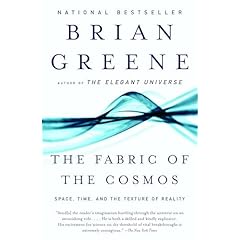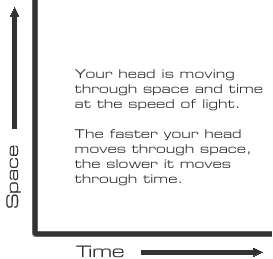Why the Sky is Blue?
 Fri, July 27, 2007 at 8:42 AM
Fri, July 27, 2007 at 8:42 AM  If you’ve got kids, and I do, you can impress their little minds by having savvy answers ready for the questions they answer while they’re examining their navels.
If you’ve got kids, and I do, you can impress their little minds by having savvy answers ready for the questions they answer while they’re examining their navels.
Why is the sky blue? Why doesn’t the sky just stay black with the sun acting as another point of light? Why do the stars disappear during the day?
Got your long-term memory ready? Here’s the answer. The first thing to understand is that the sun is slightly brighter than the moon and stars. You can verify this by staring at the sun and burning your retinas out in a minute or so. (Staring at the moon is doesn’t do this and is actually romantic.) Also of note is that the atmosphere (nitrogen and oxygen molecules) has an effect on the happy little sun beams passing betwixt them.
There is a physical phenomenon called Rayleigh scattering that causes light to scatter when passing through molecules that have a diameter one-tenth that of the wavelength (color) of the light.
Sunlight is made up of all different colors of light, but because of the physical properties of all those oxygen and nitrogen molecules in the atmosphere, blue wavelengths of light are scattered much more efficiently than the other colors. So while most wavelengths hitting the upper atmosphere just pass through and on into space, blue lights path get changed, resulting in a defuse blue light coming from all directions of the atmosphere.
So when you look at the sky on a clear day, you can see the sun as a bright disk surrounded by blue as the atoms in the atmosphere scatter the blue light waves toward you. Got that?
Of course the sky on Mars is not blue. (See the color pictures from Mars Pathfinder) This is because the atmosphere of Mars is very thin and dusty, and atmospheric light scattering is dominated not by Martian atmosphere (mostly carbon dioxide) but by suspended dust particles. These are larger than the wavelengths of visible light, and they are reddened by iron oxide from the Martian soil. It’s not just Rayleigh scattering, so the spectrum is different.
Now when you kids ask you why the sky is blue, you can dazzle them with the explanation above, or you can say that it’s blue because that’s your favorite color. It works just as well and will probably impress your kids even more.
More on the blue sky and scattering
 6 Comments | | posted in
6 Comments | | posted in  Science
Science 







